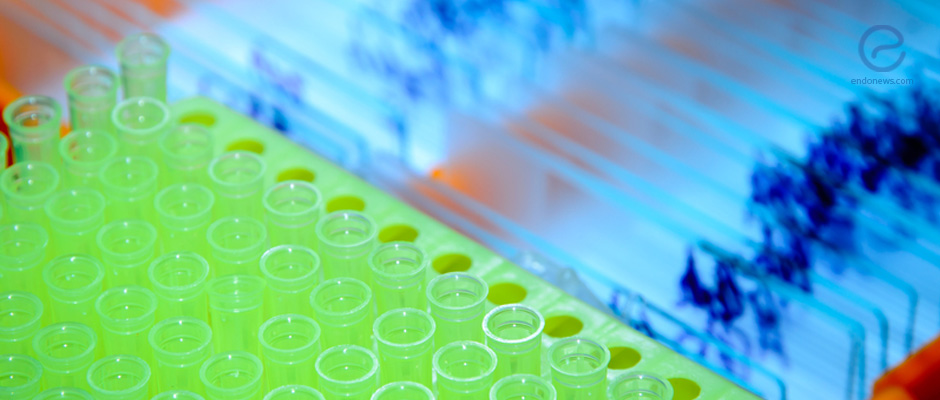A new potential therapeutic target in endometriosis: Galectin-3
The endometrial cells migrate and attach to the peritoneal surface according to the most widely accepted retrograde menstruation theory in endometriosis development. Given that only 10% of women have endometriosis, it is thought that some additional factors contribute to the…
Key Points Lay SummaryNot all endometriotic lesions behave similar to the eutopic endometrium
The most widely accepted theory of endometriosis pathophysiology is Sampson’s theory of retrograde menstruation which suggests the ectopic lesions undergo the same hormonal and morphological changes as eutopic endometrium during the menstrual cycle. Recent studies have shown that only a…
Key Points Lay SummaryDNA damage response in eutopic endometria of endometriosis patients
The DNA damage response (DDR) is a network of cellular pathways that sense, signal, and repair the lesions occurring in DNA. Surveillance proteins that monitor DNA integrity activate the DNA repair pathways in response to DNA damage and try to prevent the generation of potentially deleterious mutations. Endometriosis is an estrogen-dependent…
Key Points Lay SummaryIt is time for non-invasive tests for peritoneal endometriosis diagnosis
Maria Szubert with colleagues from Lodz Medical University, Poland, investigated the possibility of potential diagnostic biomarkers in the eutopic endometrial tissue from peritoneal endometriosis patients and published their results in the "Journal of Gynecology Obstetrics and Human Reproduction". Currently, diagnostic…
Key Points Lay SummaryCancer-associated mutations and endometriosis
Endometriosis is thought to benign gynecological disease. However, recent studies compiled in this review paper suggest that spontaneous somatic mutations are driven to occur during the cyclic bleeding resulting in endometriosis tissue undergoing repeated tissue injury and repair. Mutations are…
Key Points Lay SummarytRNA-derived fragments in ovarian endometriosis?
Endometriosis is an estrogen-dependent mysterious disorder characterized by the presence of endometrium outside the normal location of the uterus cavity. This disease affects approximately 10% of reproductive-aged women and becomes a major reason for infertility in reproductive-aged women and dysmenorrhea…
Key Points Lay SummaryA link between endometrioid ovarian carcinoma and endometriosis.
Ciavattini et al.from Polytechnic University Ancona, Italy create a pilot study which recently published in Oncology Letters to clarify the link between endometriosis and endometrioid ovarian cancer. The unfolded protein response (UPR) activity as a promoter of neoplastic progression of malignancies is…
Key Points Lay SummaryIs the mystery for progression of endometriosis hiding out in abnormally located endometrial cells?
This prospective study was conducted by Hapangama et al. in Research İnstute of the University of Liverpool, UK, and the results have recently published in the Journal of Human Reproduction. The authors hypothesized that abnormally located endometrial basalis-like (SSEA1/nSOX9+)cells could be contributing to…
Key Points Lay SummaryWhat clinicians know about adenomyosis? Any association with severe endometriosis?
Dior et al. from the Royal Women's Hospital in Parkville, Australia, designed a prospective study to assess the association between severity of endometriosis and sonographic evidence of adenomyosis (SEOA) in their recently published article appearing in The Journal of Minimally…
Key Points Lay SummaryCatching Endometriosis Early
Li et al., a group primarily from Sun Yat-sen University in the People’s Republic of China, recently published an article titled “Endometrium metabolomic profiling reveals potential biomarkers for diagnosis of endometriosis at minimal-mild stages” in Reproductive Biology and Endocrinology. The…
Key Points Lay SummaryBiomarkers as a Diagnostic Tool
Ahn, Singh and Tayade discuss the difficulties and delay in diagnosing Endometriosis in their paper titled “Biomarkers in endometriosis: challenges and opportunities.” Thus far research has identified a multitude of potential biomarkers that are found in various parts of the…
Key Points Lay SummaryThe Endometrium Itself is Genetically Different in Endometriosis Patients
Researchers in China identified a number of genes that are differentially expressed in the eutopic endometrium of women with endometriosis and those without. The researchers think that these genes may be involved in the development of endometriosis and that they…
Key Points Lay Summary
 By Eylül GÜN
By Eylül GÜN


 By Dr. Youngran Park
By Dr. Youngran Park

 By Nasuhi Engin Aydin
By Nasuhi Engin Aydin

 By Ellen Tumimbang
By Ellen Tumimbang


 By Selma Oransay
By Selma Oransay



 By Kasthuri Nair
By Kasthuri Nair


 By Özge Özkaya
By Özge Özkaya